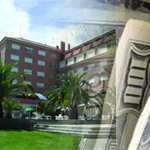Apparently, bad times are about to end for the office real estate market in much of the world. While office space is at its lowest occupancy rates because of an excess of supply, the market is starting to awaken from its lethargy in part because the global economic recovery has boosted business spending and, as a result, led to greater demand for commercial units. Experts expect 2005 to be the year when the market shows a definitive rebound.

Sign up to stay informed about our latest article releases.